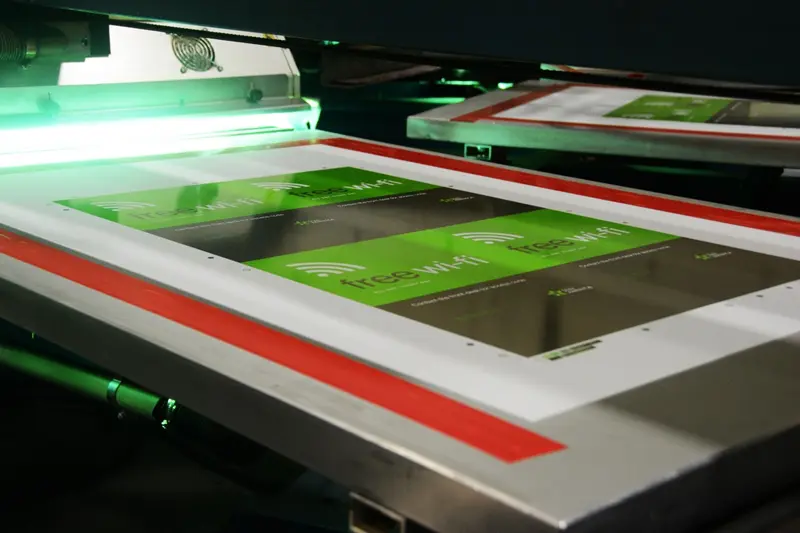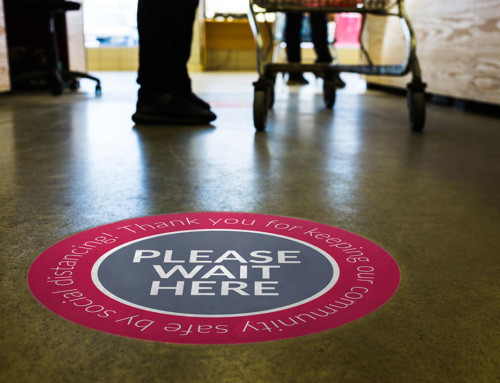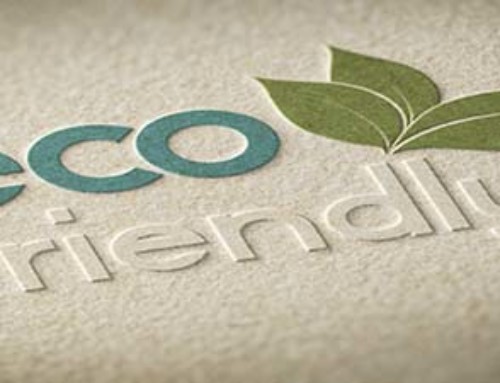Going green is more than a socially conscious act – it’s also a solid business strategy. According to a Nielsen global online study, 66 percent of consumers are willing to spend more money to support companies committed to sustainability. This increase – up from 50 percent in 2013 – is being driven primarily by millennials and Generation Z.
Businesses hoping to attract these sorts of consumers should create green initiatives that touch upon every element of the company, ranging from internal measures like switching to LED lighting and starting recycling programs to external approaches such as vetting and sourcing your print suppliers. Meanwhile, printers should offer sustainable material alternatives and environmentally friendly printing methods like Ultraviolet (UV) curing technology.

UV printing is a green alternative to conventional ink, and it is fast becoming the new industry standard in signage production. Because there are no solvents used, this system produces no dangerous volatile organic compounds (VOCs), requires no ventilation, has a higher percentage of recyclable content and cuts cost because of reduced drying time.
Using ultraviolet lights for the drying or curing process results in a very quick polymerization, or cross linking, of the ink. In short, unlike conventional solvent or oil-based inks, UV printing dries instantly – as soon as the sheet passes under the light, the ink turns from a liquid to solid state. Conventional inks dry via evaporation, and up to 50 percent of the initial ink film is lost through evaporation, releasing volatile organic compounds (VOCs) into the atmosphere. As the UV process releases no VOCs, it is much safer for operators and the environment.
Across the industry, UV curing is becoming greener with the advent of LED curing systems. These provide substantial energy savings and are slowly replacing mercury vapor curing systems for both screen printing and large format digital printers.
Green materials and recycling
Using UV printing on paper and plastic yields fully recyclable products. Hopkins recycles all of the following plastic products commonly used in our customer’s constructions:
- Acrylic
- ABS
- PETG
- Rigid Vinyl
- Expanded PVC
- Polystyrene
- Polycarbonate
- Polypropylene
In addition to these recyclable plastics, Hopkins also prints on papers like cardboard, cardstocks, ConVerd board and Reboard.
Below you will find listing of common plastic recycling codes used at home. As you would hope, our materials coincide!
- 1—PETE or PETG (Polyethylene terephthalate): For polyester fibers, thermoformed sheet, strapping and soft drink bottles.
- 2—HDPE (High density polyethylene): For bottles, grocery bags, recycling bins, agricultural pipe, base cups, car stops, playground equipment and plastic lumber.
- 3—PVC or V (Polyvinyl chloride): For pipe, fencing and bottles for non-food purposes.
- 4—LDPE (Low density polyethylene): For plastic bags, various containers, dispensing bottles, wash bottles, tubing, and various molded laboratory equipment.
- 5—PP (Polypropylene): For auto parts and industrial fibers.
- 6—PS (Polystyrene): For desk accessories, cafeteria trays, toys, video cassettes and cases, insulation board and expanded polystyrene products (e.g. Styrofoam).
- 7—Other: For other plastics, including acrylonitrile butadiene styrene, acrylic, polycarbonate, polylactic acid, nylon and fiberglass.
Green printing initiatives
Sustainability doesn’t stop at printing materials, of course. A company should be committed to reducing their carbon footprint in as many ways as possible. For instance, Hopkins saves over 225 tons of carbon dioxide from leeching into the atmosphere every year with our many green initiatives. These efforts include recycling our equipment heat in the winter months to warm our factory, using motion based doors and lighting to lower heat and electric costs in unused areas of the plant, as well as installing our 189 kW solar power array to provide clean energy for decades to come. In addition, our broad recycling efforts have kept hundreds of thousands of pounds of plastic from ending up in landfills. Click here to learn more about our environmental green initiative.



